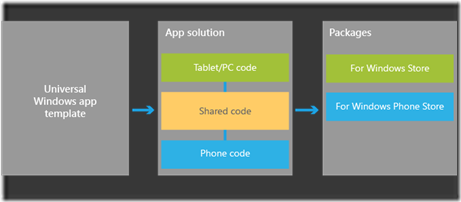Extend Your Reach with Universal Apps
During BUILD 2014 Microsoft launched the initial iteration of “Universal Apps”, allowing code to be shared between Windows PCs and Windows Phone devices in order minimize the development effort while extending reach to more platforms. Universal Apps, which uses shared APIs across desktop and mobile to more easily run apps on both, are built on a common core within Visual Studio – users have the option to create the common core immediately upon project creating for both C#/XAML and HTML5/JavaScript. The latter is particularly interesting given the potential for website portability into the Windows ecosystem.
Universal Apps on Windows now run on a common software core, or kernel with a common runtime. The only remaining difference between the platforms has mostly to do with how they handle user-interface issues across a variety of devices, input methods (touchscreens vs. mouse and keyboard), hardware (CPU, memory, graphics processors, accelerometers and other sensors) and screen sizes.
The MSDN Code Gallery also has a large collection of feature samples that use the new universal Windows app template identified with the ‘universal app’ tag.
Project templates for universal apps are installed via Visual Studio 2013 with Update 2 or later. There are several Universal app samples available by Microsoft listed here.
